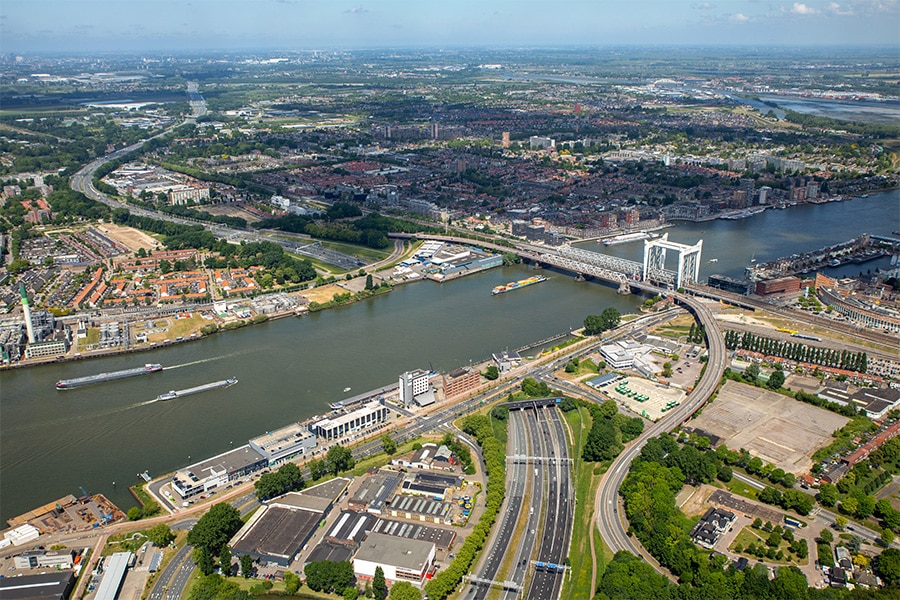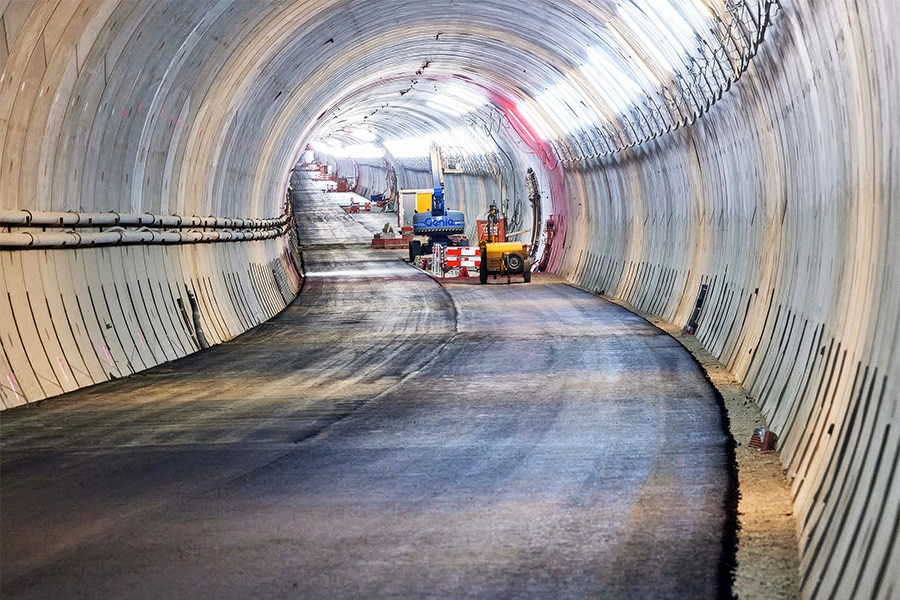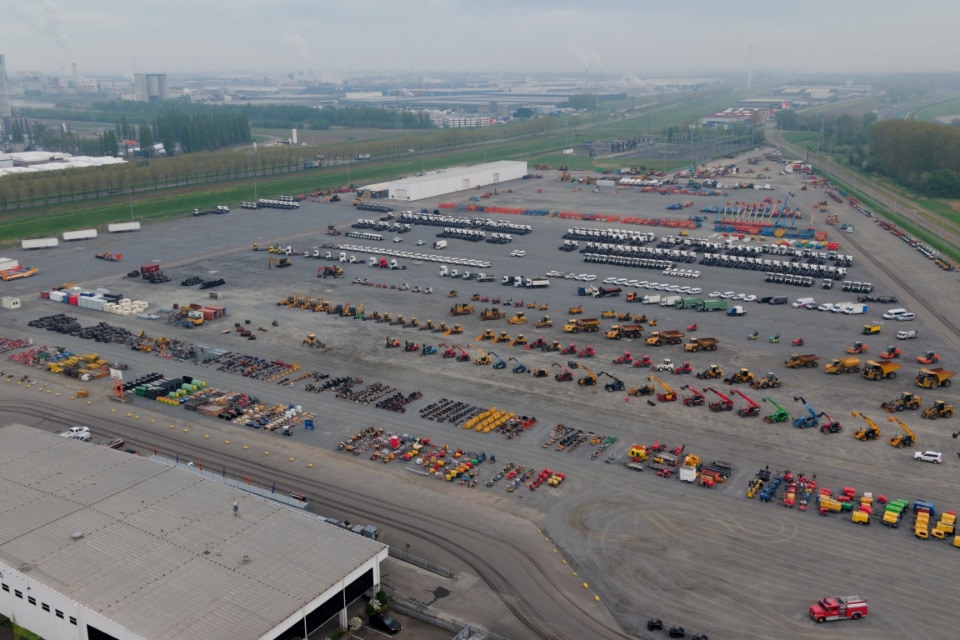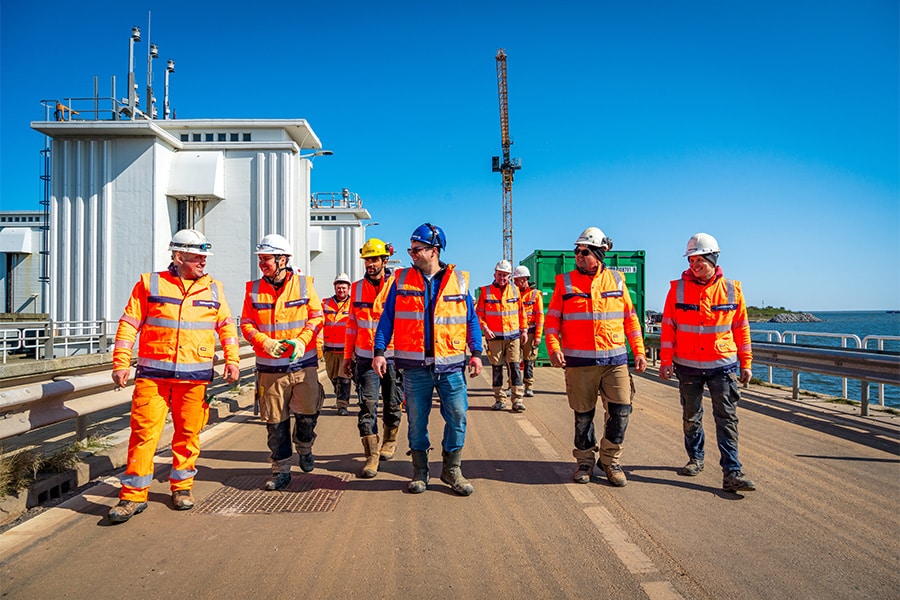
'We are integrating energy transition into our operations'
Verboon Maasland is going full steam ahead to make itself as sustainable as possible as a company. "In the current era of CO2 and nitrogen reduction, we are able to carry out many of our specialist activities completely emission-free," says director Ruud van Wijk. "We are taking our responsibility and integrating the energy transition into our operations. Now it's the clients' turn."
The sustainable realization of infrastructure and hydraulic engineering projects is now in Verboon Maasland's DNA. "We are making great strides in the context of sustainability and have not only ideas about it, but have actually developed a framed policy for it," says Ruud. "Because, the world around us is changing faster than we think. With every replacement we do, we switch to a sustainable piece of equipment. That is very consciously included in our policy. For now, that's electric, but in the future that could just as easily be hydrogen or another energy source."
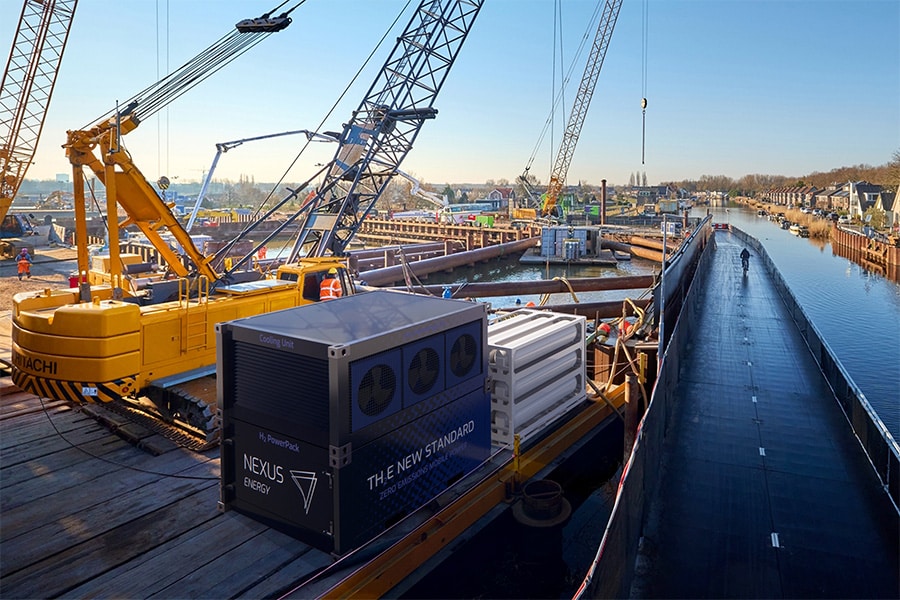
Adjusting budgets
Currently, quite a few projects are temporarily "on hold" by the government because of nitrogen. "With zero-emission equipment, such projects could possibly still go into construction in the not too distant future. But we as an industry of contracting companies cannot do that alone. For that we really do need the government to provide space and subsidy schemes on the one hand so that contractors who invest in zero-emission equipment don't do it for nothing," Ruud believes. "Budgets need to be upgraded to the current zeitgeist. Projects are still too often put on the market with a budget dating from 2017-2020. Which therefore does not take into account the fact that contractors have a different financial operation in the meantime, because they are investing in electric equipment. The old price no longer fits that. Budgets have to be adjusted accordingly. On the other hand, if a client really wants to carry out a project in a sustainable way, he will also have to pull out his wallet and take into account the price level that goes with emission-free construction. An electric crane or truck can easily have a purchase value one and a half to two times higher."
Ruud is happy to give us a look at the machinery. We see, among other things, an electric cutter suction dredger, an electric 100-ton wire crane, two electric 8×4 trucks, an electric 23-ton excavator, an electric pusher, electric cars, vibratory plates, etc. "We already have a nice fleet that can run emission-free. And since this summer we have also added a hydrogen fuel cell, which can provide enough power for our electric cutter suction dredger or our 100-ton electric wire crane. So even in locations where there is no shore power, we can operate completely emission-free. We have integrated the energy transition into our operations, now it is up to the government to integrate it into the project realization goals," Ruud says firmly.
